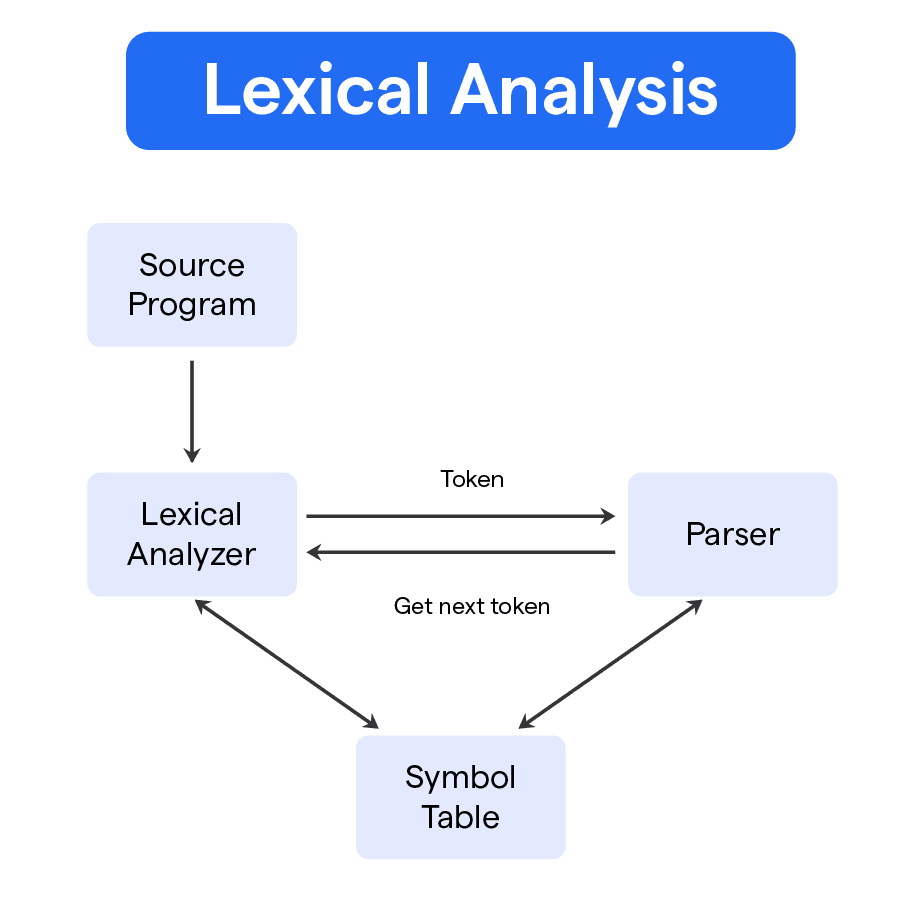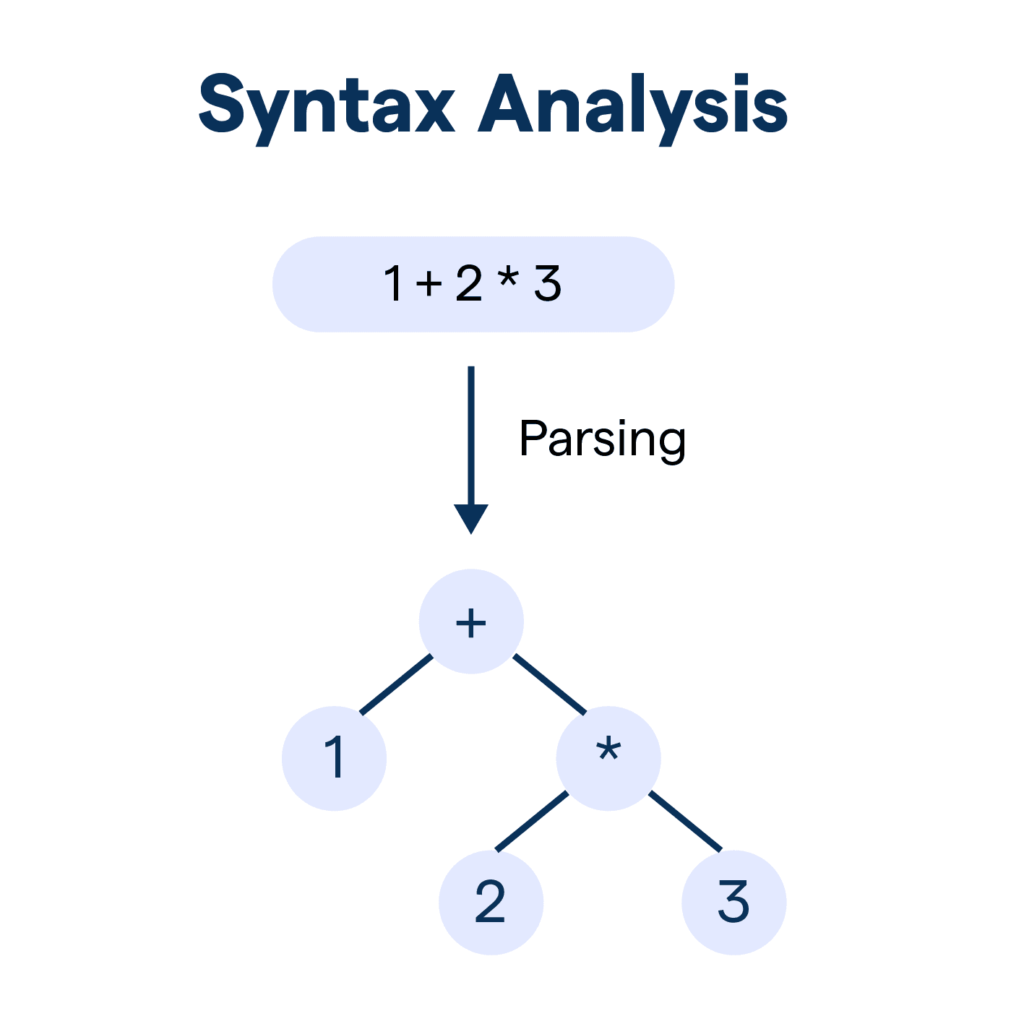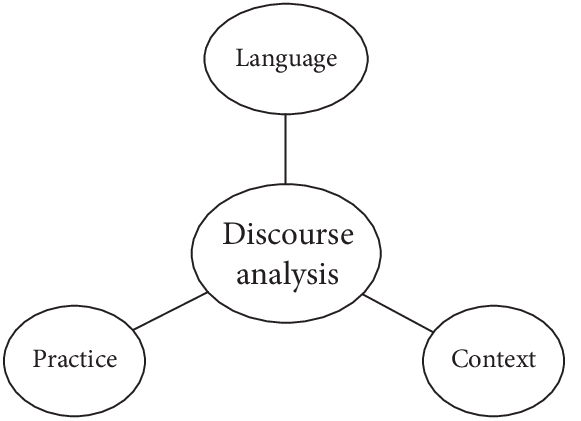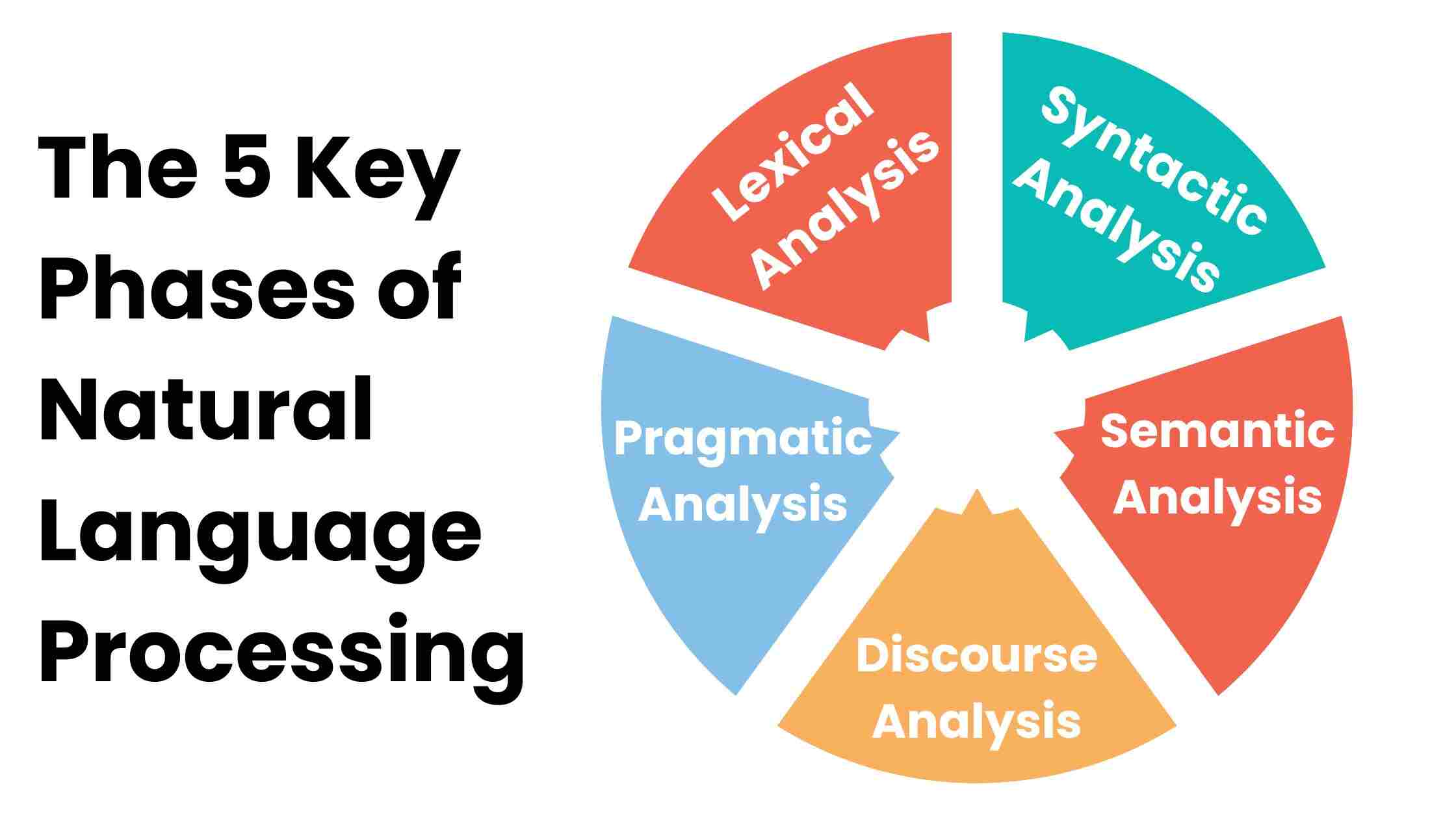Have you ever wondered how computers understand human language? It’s all thanks to Natural Language Processing. There are five important steps, known as the phases of Natural Language Processing.
The phases of natural language processing are Lexical Analysis, Syntactic Analysis, Semantic Analysis, Discourse Analysis, and Pragmatic Analysis.
Whether you’re curious about AI or just want to know how your virtual assistant works, understanding these phases can be really interesting.
Let’s dive in and explore the five key phases of Natural Language Processing together!
Table of Contents
- Phase 1: Lexical Analysis
- Phase 2: Syntactic Analysis
- Phase 3: Semantic Analysis
- Phase 4: Discourse Analysis
- Phase 5: Pragmatic Analysis
- The NLP Pipeline: Putting It All Together
- FAQ’s
- Conclusion
Phase 1: Lexical Analysis

Lexical analysis is the first step in the phases of Natural Language Processing. Think of it as the foundation of understanding language.
What happens in this phase?
- Breaking down text into smaller units (tokens)
- Identifying words, numbers, and punctuation
- Removing unnecessary spaces and formatting
Key components:
- Tokenization: Splitting text into individual words or tokens
- Lemmatization: Finding the base form of words (e.g., “running” becomes “run”)
- Stemming: Reducing words to their root form (e.g., “cats” becomes “cat”)
Why it’s important:
Lexical analysis helps computers start making sense of human language by breaking it down into manageable pieces.
Phase 2: Syntactic Analysis

Syntactic analysis is like putting together a language puzzle. It’s the second phase in the phases of Natural Language Processing.
What it does:
- Examines the structure of sentences
- Identifies parts of speech (nouns, verbs, adjectives, etc.)
- Determines how words relate to each other
Key techniques:
- Parsing: Breaking down sentences into their grammatical components
- Part-of-speech tagging: Labeling words with their grammatical roles
Example: Sentence: “The cat chased the mouse.” Syntactic breakdown:
- “The” – Article
- “cat” – Noun (subject)
- “chased” – Verb
- “the” – Article
- “mouse” – Noun (object)
Why it matters
Syntactic analysis helps computers understand the structure of language, which is crucial for interpreting meaning correctly.
Phase 3: Semantic Analysis

Semantic analysis digs deeper into the meaning of words and sentences. It’s a critical part of the phases of Natural Language Processing.
Goals of semantic analysis:
- Understand the literal meaning of words and phrases
- Identify relationships between words
- Recognize synonyms and antonyms
- Interpret figurative language
Challenges:
- Dealing with ambiguity (words with multiple meanings)
- Understanding context
- Interpreting idiomatic expressions
Real-world applications:
- Improved search engine results
- Better machine translation
- More accurate sentiment analysis
Why it’s important:
Semantic analysis helps computers grasp the true meaning behind words, getting closer to the human-like understanding of language.
Phase 4: Discourse Analysis

Discourse analysis looks at how sentences and ideas connect in a larger context. It’s an advanced step in the phases of Natural Language Processing.
What discourse analysis involves:
- Understanding relationships between sentences
- Identifying main topics and themes
- Recognizing the overall structure of a text
- Tracking references (like pronouns) across sentences
Key concepts:
- Coherence: How well ideas fit together
- Cohesion: How sentences are linked grammatically
- Anaphora resolution: Figuring out what pronouns refer to
Benefits:
- Improved summarization of long texts
- Better question-answering systems
- Enhanced chatbot conversations
Why it matters:
Discourse analysis helps computers understand the big picture, not just individual sentences.
Phase 5: Pragmatic Analysis

Pragmatic analysis is the final phase in the phases of Natural Language Processing. It’s all about understanding the practical use of language.
What pragmatic analysis does:
- Interprets the intent behind words
- Considers real-world context
- Understands implied meanings
Key aspects:
- Speaker’s intention
- Cultural context
- Situation-specific meanings
Examples of pragmatic understanding:
- Recognizing sarcasm or humor
- Understanding indirect requests
- Interpreting social cues in language
Why it’s crucial:
Pragmatic analysis helps computers understand language the way humans do, considering not just what is said, but how, why, and in what context it’s said.
The NLP Pipeline: Putting It All Together
Ever wondered how all the phases of Natural Language Processing work together? Let’s dive into the NLP pipeline!
What is the NLP Pipeline?
It’s like an assembly line for language processing. Each phase builds on the previous one, transforming raw text into something a computer can understand and work with.
The Flow:
- Lexical Analysis → 2. Syntactic Analysis → 3. Semantic Analysis → 4. Discourse Analysis → 5. Pragmatic Analysis
How It Works:
The first step is Raw Text Input Example: “The cat sat on the mat.”
The second step is Lexical Analysis:
- Break down the sentence into tokens
- Result: [“The”, “cat”, “sat”, “on”, “the”, “mat”, “.”]
The third step is Syntactic Analysis:
- Identifies parts of speech and sentence structure
- Result:
- “The” (article)
- “cat” (noun, subject)
- “sat” (verb)
- “on” (preposition)
- “the” (article)
- “mat” (noun, object)
The fourth step is Semantic Analysis:
- Determines the meaning of words and the sentence
- Understanding: A feline animal is sitting on a floor covering
The fifth step is Discourse Analysis:
- Connects this sentence to the surrounding context (if any)
- Example: Is this part of a story? A description?
The sixth step is Pragmatic Analysis:
- Interprets the intent and real-world implications
- Questions asked: Why is this information important? What should be done with it?
Benefits of the NLP Pipeline:
- Breaks complex language processing into manageable steps
- Allows for improvement at each stage
- Enables various applications like chatbots, translation, and text summarization
Remember:
The NLP pipeline is flexible. Depending on the task, some applications might not need all phases, while others might add extra steps for specific needs.
Fun Fact:
Just like you’re learning about the phases of Natural Language Processing, computers are constantly learning too! Each time they process language, they get a little bit better at understanding us humans.
FAQ’s
Natural language processing (NLP) is a field of artificial intelligence that focuses on enabling computers to understand, interpret, and generate human language in a valuable way.
NLP models are computer programs designed to understand, interpret, and generate human language. They use machine learning algorithms to process and analyze text or speech data.
Conclusion
In conclusion, the phases of Natural Language Processing show us how computers break down and understand our words. From splitting sentences into parts to figuring out the real meaning behind what we say, these steps help machines make sense of human language.
As technology advances, NLP will only get better at understanding us. By learning about these phases, we can appreciate the complex work happening behind the scenes in our everyday tech interactions.

